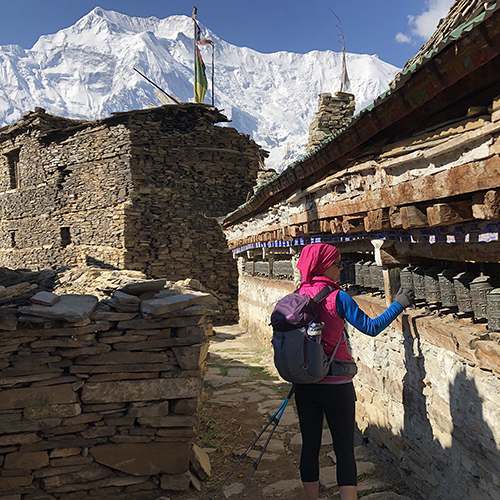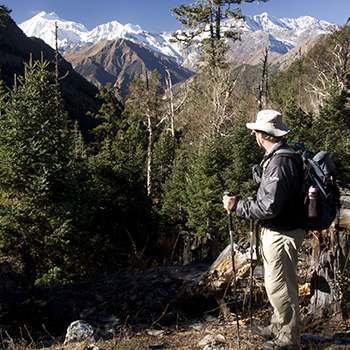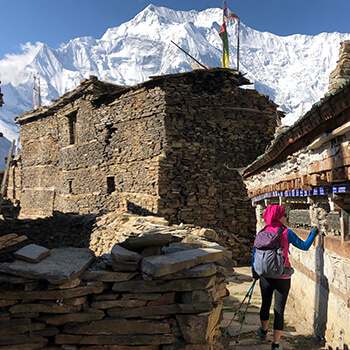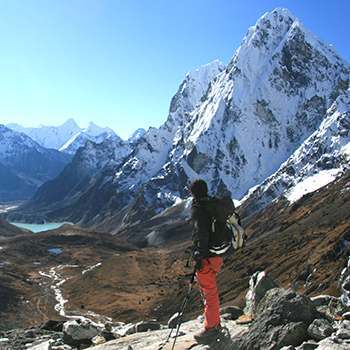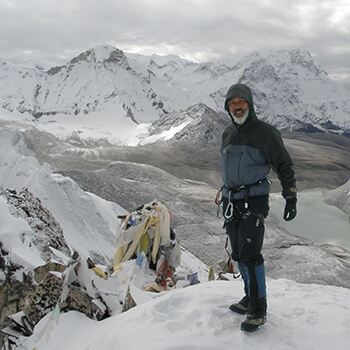Which Style of Trek is Right for You?
There are three main ‘styles’ of trekking, so which style of trek has many pros and cons. Which style of trek will depend on your destination, budget, time available and personal preferences. There is no better or worse style, in fact you might find yourself combining styles in some destinations to provide a broader experience.
- Independent (Solo) Trekking Without a Guide
- Teahouse Trekking With a Guide
- Trekking With a Camping Crew
PLEASE NOTE THE FOLLOWING IS SPECIFICALLY RELEVANT TO NEPAL, BUT ALSO MOSTLY APPLIES TO INDIA, LESS SO TO BHUTAN.
In India, additional major issues are issuance of Inner Line Permits, minimum group sizes of 4 foreigners on some trails, interference from military personnel, the need to change trekking operators for different regions and a lack of accommodation in remote areas.
In Bhutan, additional major issues are that pack animals are used instead of porters, a per-day all inclusive permit system that must be managed by a registered company and a lack of accommodation in remote areas.
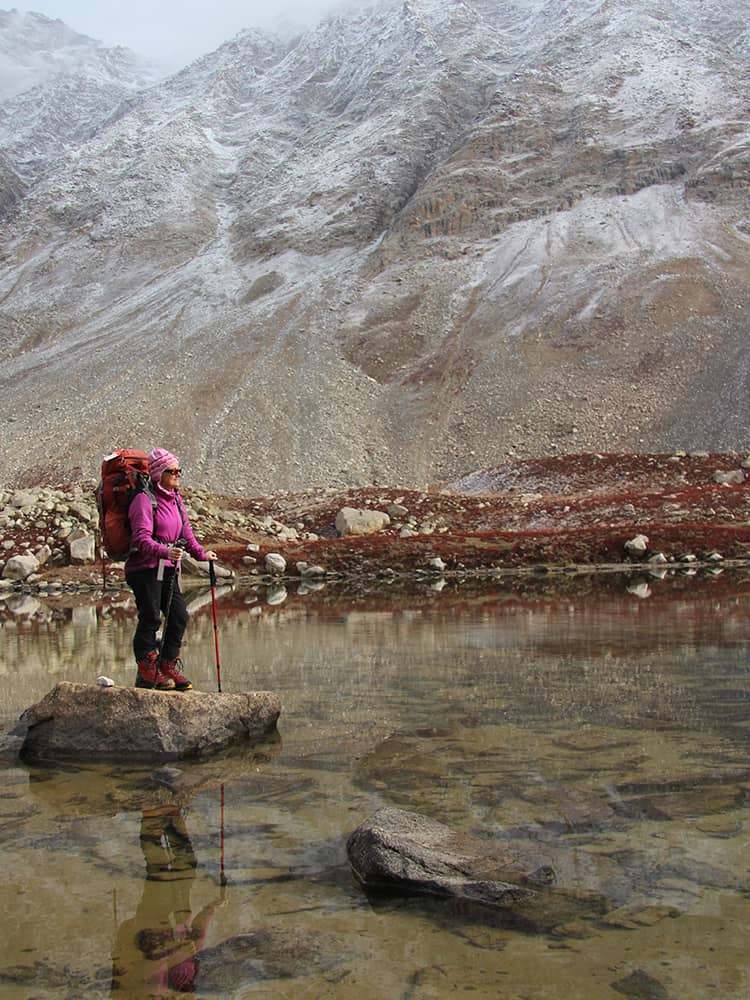
Independent (solo) trekking without a guide
For many, the idea of finding one’s own way and living off the land is what trekking is all about. To be completely free to plan your day, to have all your gear on your back, and to interact one-on-one with locals is a liberating experience. Due to the nature of independent trekking it is normally a good idea to trek with a friend or in a small group of up to four for safety – larger groups tend to find it difficult to find accommodation.
Being an independent trekker doesn’t mean to say that you cannot have a porter or a porter/guide. The introduction of the TIMS (Trekkers Information Management System) has made this option a little more complicated, but it is still possible to employ a local for almost any period of time, which can make tricky navigation and strenuous sections considerably easier.
Most independent trekkers prefer to trek the main routes of the Annapurna, Everest, Langtang, Makalu, Manaslu, Mustang, Rolwaling and Tamang Heritage Trail areas as they offer teahouse accommodation and a standardised menu. Trails in these areas are well marked and some of the local people speak enough of a range of languages that the individual trekker can get along with the most basic Nepali. Even though you may walk on your own, or with a local porter, it is in fact very rare that you will find yourself without company, especially in the evenings when you sit in the teahouse communal dining room. The main trails are normally busy with local traffic so if you carry a pocket guide and map it is unlikely that you’ll take a serious wrong turn, although getting a little lost is almost inevitable.
Independent Trekking is the Cheapest Way to Trek
Independent trekking is also the cheapest way to explore the mountains so it is popular with budget-conscious travellers. Expect to pay anything from US$2.50 to US$15 a night for a bed depending on room type, teahouse location, and season demand (in extreme cases teahouse owners have been known to auction beds!). Food per day will average US$8-15 for Nepali fare, which is normally dhal bhat (rice, vegetable curry and lentil soup), to US$15-30 for three Western meals. You should probably also budget for the occasional hot shower (US$1-2) and battery re-charge (roughly US$4 per hour). If you employ a local porter or porter/guide, you will probably have to pay US$12-25 (plus meals) a day depending on the region, amount they carry and trail difficulty.
But The Risks Are Greater
There are a few drawbacks to independent trekking: coping with altitude and health problems on your own, logistical challenges, communication issues and safety concerns. None of these are insurmountable but they do need to be taken seriously both before and during your trek. Altitude and health problems are best monitored and dealt with as part of a ‘buddy system’ – that is, you and your trekking companion look after each other (for more details, see Health and Wellbeing).
There are also some potential logistical issues in high season: the most common is that many teahouses are booked in advance by organised trekking groups and you may find getting a room, or even floor space to sleep on, difficult and/or expensive. It is therefore a good idea to start trekking before or just after the main rush of tourists (see When to Trek and the introduction of each trek for more information). It’s very useful to be able to speak basic Nepali on the trail to find your way, order food and drinks, and get to know the locals, which is after all one of the main advantages to independent trekking!
If this is going to be your first visit to the Himalaya the independent option probably isn’t the best style to kick off your adventures, unless you are the ultimate intrepid traveler and you stay on the main trails. Independent trekking in remote wilderness areas is only suited to trekkers who have already learnt how their body deals with altitude, developed some familiarity with Nepali and the various customs of mountain communities, and have a good knowledge of Himalayan terrain and navigation.
Where can you do Solo Treks?
Solo trekking (independent and without a guide) is generally not permitted throughout the Himalaya, especially in Bhutan. However there are areas in both Nepal and India where you can head to the hills alone:
Solo Trekking Areas In Nepal
The three main trekking regions, Everest, Annapurna and Langtang all permit solo trekking. Plus Makalu, Rolwaling and the Ganesh Himal. So in total, about half of the Nepal Himalaya is open to solo trekkers.
Solo Trekking Areas in India
You can trek anywhere on your own in the northwest Indian Himalaya regions so long as you do not need an Inner Line Permit. However, Sikkim and Arunachal Pradesh do not allow solo trekking.

Teahouse Trekking With a Guide
Recent years have seen a dramatic increase in both the number and the standard of facilities in villages on the main trails. For example, Namche in the Everest Region now boasts 24-hour electricity, a laundrette, multiple internet cafés, bakeries, and all the trappings of Thamel (the tourist district in Kathmandu) but at 3500m! It is no surprise therefore that teahouse trekking with a guide has become incredibly popular.
The teahouse system is extensive in Nepal and includes the main trails in Kanchenjunga, Makalu, Everest, Rolwaling, Langtang, Ganesh and Manaslu Himal, Annapurna, Mustang and some of Dolpo. There are a few teahouse cropping up in the Far West as well but isolated.
There are homestays and a few hotels in Bhutan and India, but most trekking does not have access to teahouse-style accommodation.
Teahouses are Super Convenient
The convenience of teahouse trekking in the Everest, Annapurna and Langtang areas is a major drawcard for tens of thousands of trekkers every year. The subsequent level of investment by local communities in these regions is extraordinary compared to the level of poverty elsewhere in the Himalaya. Large teahouses with comfortable communal dining rooms, private bedrooms (some with en suite bathrooms) with mattresses and bedding, extensive menus or specialty restaurants and bakeries can make your trek a very comfortable experience. Commercial trekking companies from all over the world sell organised walking holidays using these teahouses and a local guide agency, and they’re flexible enough to suit almost any fitness and experience level. Recent years have also seen the development of more basic teahouse facilities in Kanchenjunga, Makalu, Rolwaling, Manaslu, Tamang Heritage Trail and Mustang regions, all of which offer an authentic Nepali trekking experience.
Guides are normally hired through a trekking agency in Kathmandu or Pokhara, as professional registration is a necessary qualification to lead groups within National Parks. It is important to make sure your guide has been to, or preferably comes from, the area where you want to trek – it is surprising how many guides have only trekked a few trails. The role of a guide can encompass a great many activities. Apart from being the person who escorts you along the trail, they can often explain customs, culture, history, flora and fauna. A guide may also manage any porters (should you only want to carry a small pack), ensure your accommodation is booked, transport is confirmed, and that the food is well prepared; in fact, your guide will probably become your personal assistant, man-Friday, guardian and best friend. For this reason, most good guides are normally snapped up by the bigger agencies and accompany groups booked by overseas trekking companies.
There are no major drawbacks to this style of trekking. However, there are a few issues that people regularly complain about. One is that teahouses that accept larger groups can be very noisy at night; for most people it’s tougher to sleep at altitude, so anything that disrupts sleep is irritating. Another involves the decisions that your guide makes without consultation, like where to stay, or route options. Make sure you have a clear understanding of who makes which decisions. Small groups trekking with a guide may find it difficult to secure rooms or even meals in some teahouses that devote themselves to larger, more profitable parties. If you are a woman trekking alone with a guide be aware that even simple acts can be misconstrued as a proposition (see Trekking as a Single Female).
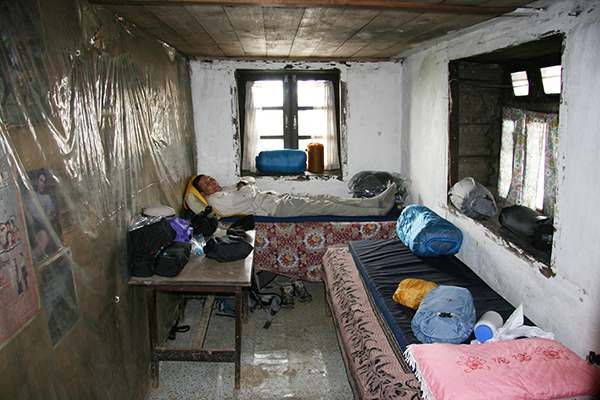
Tea Houses are often basic but comfy places to stay.
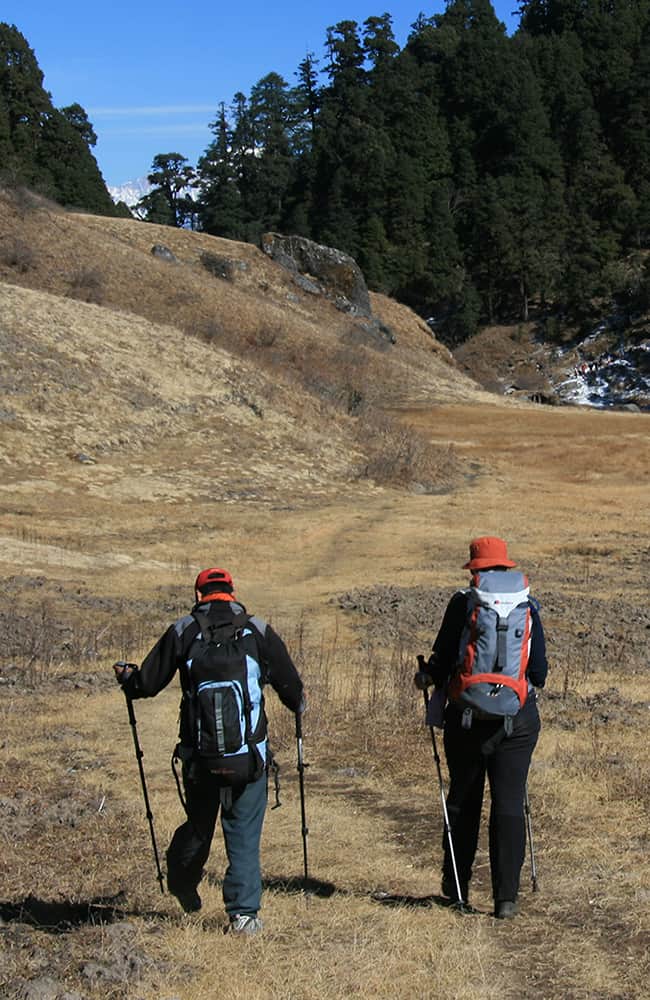
A local guide can add context, translate and become a great friend. Plus teahouses make trail life much more convenient.
Tea House Trekking Pros and Cons
Booking a trek through an overseas operator means you don’t get to have any choice of guide, but you do have the reassurance that they are probably going to be excellent and if not, you have recourse to complain. The size of group you will be trekking with becomes important when you choose a ‘packaged trek’. Some companies are still in the habit of sending over twenty trekkers into the hills with a single guide and a few porters, which is irresponsible and doesn’t make for a good holiday. A group size of twelve to fourteen is normally considered a manageable maximum and you’ll still get the opportunity to chat with your guide and spend time with any crew that they might hire.
One main advantage of hiring your own guide and teahouse trekking is that you can control your costs and stay within a budget that would be considerably less than booking with a big travel company. The logistical convenience of having someone with local knowledge handling routine details such as where to stay, negotiating prices, and giving route directions is a great peace of mind. The safety and security of local knowledge should not be underestimated, nor should the ability to communicate to your heart’s content through your guide’s interpreting. Finally, the chance to build a friendship with someone is perhaps the most remembered feature of any trekking holiday. You might forget the name of the mountains you’ll photograph, but you’ll never forget your guide!

Camping treks with a crew allow you complete freedom to explore the Himalaya. Plus you’ll make a new family of friends along the way.
Trekking with a camping crew
The most flexible, comfortable and hygienic way to explore the Himalaya is on a camping trek. To have unrestricted access to trails, viewpoints, and passes you need to be self-sufficient, with the support of a team of experienced staff. For many trekkers their first trip to Nepal will be teahouse based, but the lure of what lies beyond the main trails is so strong they return for a camping trek, often to the more remote areas.
Trekking in Nepal was initially exclusively camping based so there is a substantial experience pool that means even the first-time camper will be comfortable and well looked after. Each morning you will be woken with a mug of tea delivered by a smiling sherpa (as opposed to Sherpas, the famous ethnic group from the Everest Region), followed by a bowl of water to wash your face. Breakfast is preferably served al fresco in the morning sun as your crew packs up the camp. At some point along the day’s trail your cook will have prepared a lunch for you at a scenic spot before you complete your journey to the next campsite and an extensive dinner menu. Shower, toilet and dining tents with tables and chairs complete your campsite and comfort comes courtesy of a foam mattress and pillow (usually an optional extra). In fact, camping in Nepal is frequently more comfortable, quieter and less crowded than teahouses!
Nearly all remote or exploratory treks will be camping based as a group needs to have sherpas and crew available to help cross passes and break trail. The roles of various crew members is normally well defined: the guide (or sirdar) is in charge; the sherpas look after clients on the trail, serve meals and make/break camp; the cook and kitchen staff prepare meals and wash dishes for the group, while the porters carry everything. Normally, a guide discourages trekkers from becoming too friendly with the crew as companies are paranoid they might lose your future business to prospecting staff.
Camping Trek Pros and Cons
With the increasing popularity of teahouse trekking, companies that specialise in camping treks are becoming more competitive so it is important to check the details of your trek before you depart. The two most common ways companies cut costs are: firstly, increasing the amount of load the porters carry and not providing them with necessary clothing and equipment (see the International Porter Protection Group, : www.ippg.net for how you should care for your porters and your obligations towards them); secondly, either the agency or the cook reduces the money dedicated to your food and fuel allowance. It is important that the group leader should keep an eye on the quantity and quality of stocks.
The obvious drawbacks to camping-style treks are perceived inconvenience and potentially having to share a tent with someone you would rather not sleep next to. To resolve both issues research is necessary. Camping really is more convenient than teahouses on the condition that you have a slightly flexible itinerary, so you can ensure washing and relaxing time for all, especially when the weather is good. Almost all camping groups offer single occupancy tents but you normally have to specify when you book, and you should always check the terms and conditions.
Final Words About Which Style of Trek
For many, camping trek drawbacks are easily mitigated and, in fact, are overwhelmed by the advantages of camping-style treks. Choosing your own path and rest spots offers a level of itinerary customisation that not even teahouses in the most popular regions can compete with. The main benefit, however, is being able to explore remoter regions away from the main trails and meet some of the inhabitants of the wild Himalaya. It is hard to believe that there are still many villagers who have never seen a tourist, where communities greet you as an honoured guest and not as an opportunity to make another buck. Away from the main routes is where you’ll most likely see many of the species for which the Himalaya is famous: red panda, black bear, musk deer, snow leopard and a multitude of birds.
For many trekkers and trek leaders, camping-style treks are their favourite method of exploring Nepal. They often say that their experience feels more genuine. Camping brings you closer to nature, and the camaraderie built around a campfire often outlasts that of a teahouse trek.
But which style of trek is right for you? Maybe a combination of the above to get a more complete Himalayan experience?
Unsure of the different styles and where you can find teahouses? Or maybe you want the latest update on where you can find food and accommodation along the GHT? Feel free reach out and Get in Touch.
Time for the Next Step
Now that you’ve decided which style of trek, female trekkers should check out Trekking As A Single Female. Then everyone should go through Trek Duration and Grade to decide ‘how far’ and ‘how hard’!




